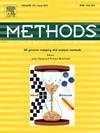用于活细胞质膜蛋白拓扑分析的非侵入性工具
IF 4.3
3区 生物学
Q1 BIOCHEMICAL RESEARCH METHODS
引用次数: 0
摘要
膜蛋白拓扑研究为膜蛋白的结构、折叠和功能提供指导,是设计定点诱变和生化实验的可靠支架,有助于识别功能重要的细胞外和细胞内区域,建模三维结构,建立可靠的机制模型。膜蛋白结构作为给定脂质组成和细胞生理状态的功能,最好在完整的细胞中进行研究。描述了一种简单而先进的免疫荧光方案,用于膜外结构域的跨膜定向,允许对活的未受干扰的真核细胞中处于天然状态的质膜蛋白进行拓扑分析。原生表位对相应抗体的可及性是在完整细胞和渗透细胞中确定的,以分别确定其细胞外或细胞内或定位。在几个小时内,通过免疫荧光共聚焦显微镜或荧光流式细胞术参数分析,常规评估给定抗体在完整活细胞和渗透细胞中结合表位的能力。为了确保观察到的免疫荧光完全是抗体结合的结果,细胞是活的,质膜是完整的,通过与细胞膜不渗透探针碘化丙啶共孵育细胞,常规监测质膜的完整性。因此,质膜侧特异性免疫染色分析仅限于碘化丙啶阴性,非渗透细胞群。该技术的优势在于其简单性,因为每个天然表位都是独一无二的,不需要突变任何内源性位点,引入新的表位,或设计单、双或分裂比色酶报告基因。除了简单之外,这种方法的优点是拓扑结构是在全长和完全生物活性的膜蛋白分子的背景下记录的,并且拓扑映射是使用整个活细胞进行的,从而避免了与细胞固定或细胞转化为具有统一方向的膜囊泡相关的问题。该方案可以普遍适用于任何细胞系统,系统地绘制目标膜蛋白的统一拓扑结构。本文章由计算机程序翻译,如有差异,请以英文原文为准。
Non-invasive tools for analysis of plasma membrane protein topology in living cells
Membrane protein topology studies offer guidance to membrane protein structure, folding, and function, serving as a credible scaffold for designing site-directed mutagenesis and biochemical experiments, helping to identify functionally significant extracellular and intracellular regions, modeling three-dimensional structures, and building reliable mechanistic models. Membrane protein structure as a function of given lipid composition and physiological state of the cell is best probed in whole intact cells. A described simple and advanced immunofluorescence protocol applied to the transmembrane orientation of extramembrane domains permits a topology analysis of plasma membrane proteins in their native state in living unperturbed eucaryotic cells. The accessibility of native epitopes to corresponding antibodies is determined in intact and permeabilized cells to establish their extra- or intracellular or localization respectively. The ability of the given antibody to bind the epitope in intact live and permeabilized cells is then assessed routinely by intact and permeabilized cell immunofluorescent confocal microscopy or fluorescence flow cytometry parametric analyses in several hours. To ensure that the observed immunofluorescence is entirely a result of the binding of antibodies, cells are alive and the plasma membrane is intact, plasma membrane integrity is routinely monitored by co-incubating the cells with a cell membrane-impermeable probe, propidium iodide. Accordingly, plasma membrane side-specific immunostaining analysis was restricted to the propidium iodide-negative, non-permeabilized cell population. The strength of this technique is its simplicity since each native epitope is unique and there is no need to mutate any endogenous sites, introduce new epitopes, or engineer single, dual, or split colorimetric enzymatic reporters. Aside from its simplicity, the advantage of this approach is that the topology is documented in the context of full-length and fully biologically active membrane protein molecules, and topology mapping is carried out using whole live cells, thereby avoiding problems related to cell fixation or the conversion of cells into membrane vesicles with a uniform orientation. The protocol can be universally adapted to any cellular system to systematically map a uniform topology of target membrane protein.
求助全文
通过发布文献求助,成功后即可免费获取论文全文。
去求助
来源期刊

Methods
生物-生化研究方法
CiteScore
9.80
自引率
2.10%
发文量
222
审稿时长
11.3 weeks
期刊介绍:
Methods focuses on rapidly developing techniques in the experimental biological and medical sciences.
Each topical issue, organized by a guest editor who is an expert in the area covered, consists solely of invited quality articles by specialist authors, many of them reviews. Issues are devoted to specific technical approaches with emphasis on clear detailed descriptions of protocols that allow them to be reproduced easily. The background information provided enables researchers to understand the principles underlying the methods; other helpful sections include comparisons of alternative methods giving the advantages and disadvantages of particular methods, guidance on avoiding potential pitfalls, and suggestions for troubleshooting.
 求助内容:
求助内容: 应助结果提醒方式:
应助结果提醒方式:


